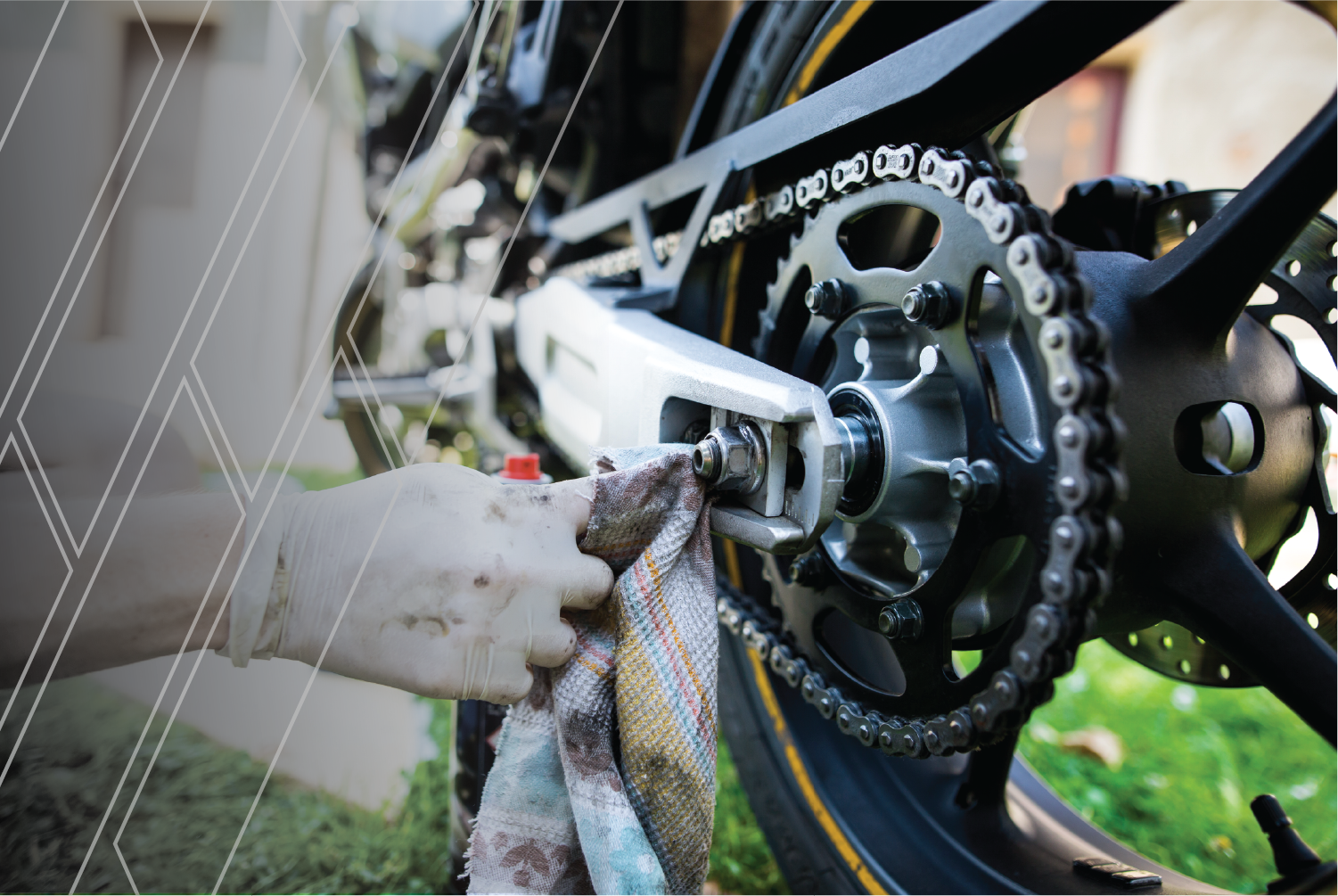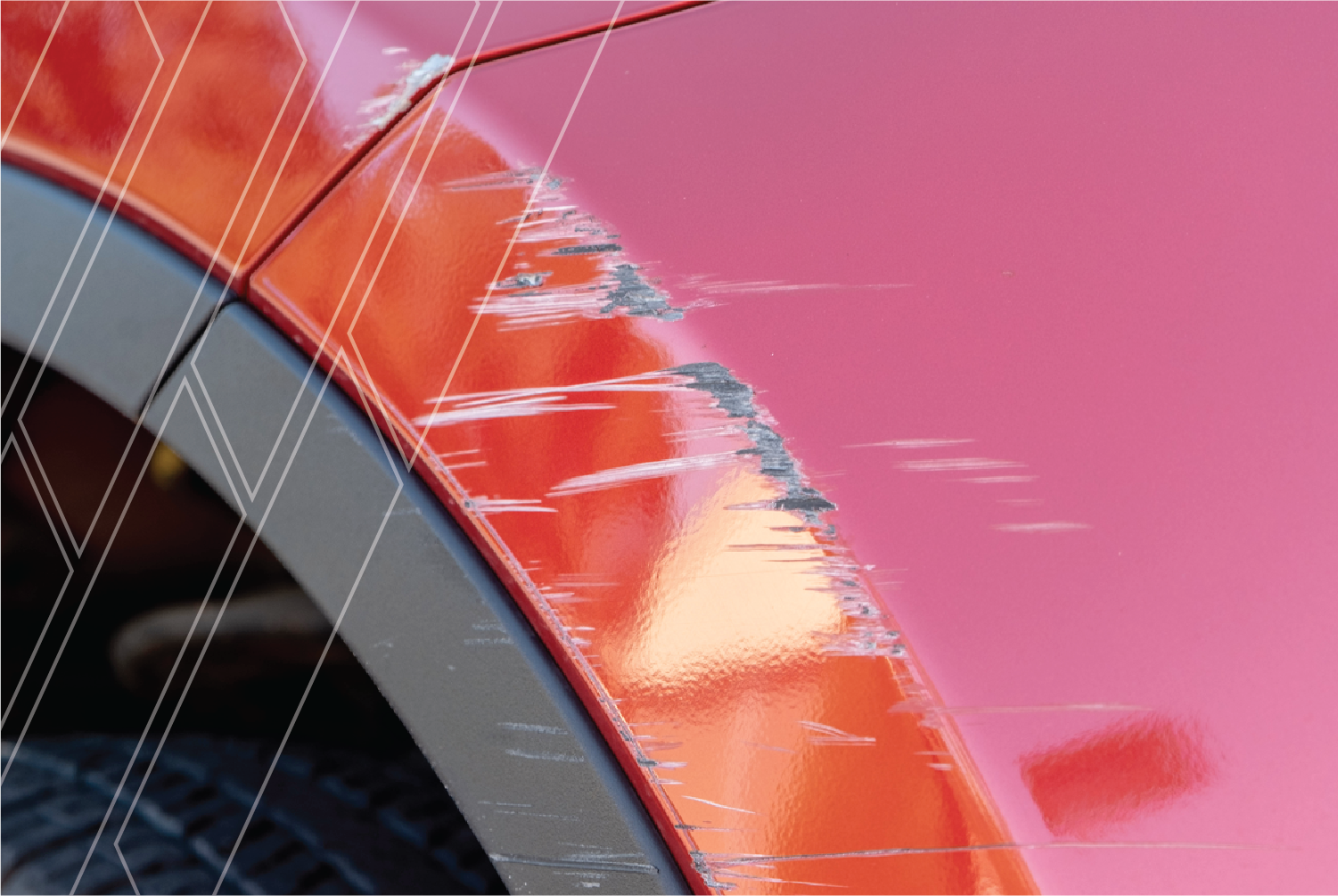
BASIC BIKE CARE TIPS TO MAINTAIN YOUR BIKE IN GOOD CONDITION & HEALTH
Working from home nowadays means everyone has more & more time on our hands. We can devote our attention to our passions, bikes, and cars. When you can’t go for a ride on your bike, then the next best thing is to take care of your vehicle.
We have compiled a set of easy-to-follow bike care tips that will go a long way for getting the best performance from your bike as well as for avoiding extra cost overheads that may result due to improper upkeep.
Let’s take a look at essential bike maintenance tips to keep your bike in top shape. We will cover all the points from cleaning the bike to touch-ups, and everything in between.

BIKE CLEANING: THE PROPER WAY TO KEEP YOUR TWO-WHEELER SHINING
One of the most important processes of keeping your bike free from hassles is to regularly wash it. Now with bike washing, many believe just splashing your bike with a bucket full of water and wiping it will do the trick.
Nope, that is the incorrect way to clean your bike, because tough stains, dirt, and areas that are difficult to reach will require a proper wash. You can do this with the 2 bucket method.
As the name suggests you need two buckets for thorough cleaning of your bike.
For this keep one bucket with clean water and one with bike wash liquid. What you do next is take your microfiber cloth, dip it in the bucket with soapy water and begin cleaning your bike.
Next, take that cloth and dip it into the regular bucket of water to get rid of the dirt. You gotta keep repeating these steps until your two-wheeler is nice and clean.
If you have access to a portable pressure washer, it will make the process of cleaning much easier, especially removing the dirt and grime in difficult-to-reach spots.

BIKE WAXING: KEEPING YOUR BIKE DIRT FREE
Now once your two-wheeler is clean and dust-free, there's a cost-effective and simple technique to keep it shining like new and that's by covering it in a layer of protective wax.
Unlike Teflon and ceramic coatings, this can be done by yourself or get done at a workshop. Waxing began in the eighteen hundreds when people used to cover their horse carriages in the substance to protect its paint from the dirt and dust on the road. The concept behind what we do today for waxing bikes is exactly the same but the products are much more sophisticated and the application is very simple. You can use the applicator sponge to apply the wax to the paint after which you have to wipe it down with a clean dry cloth till you see no residue of the wax. That's it, your two-wheeler is protected for at least 4-5 weeks.

CHECKING UP THE BIKE CHAIN
The chain is what sends power from your engine to the rear wheel which is why it has to be in great shape.
It has to be clean and well lubricated and also set in a way that is not too loose or too tight. To clean your bike’s chain you need a chain cleaner and a chain cleaning brush but you can also get away by using an old toothbrush. You will need to keep scrubbing till the links are clean free from the built-up gunk. After this, you'll need a can of chain spray to keep it lubricated.
In the unlubricated stage, adjusting your chain can be a nerve-wracking thought. But it is simpler than it sounds. What you need to do is get the correct spanners and loosen the large bolt that keeps the axle in place once that's done you'll have to loosen the first small nut that sticks out at the end of the swing-arm. This will give you access to the second small nut which is the chain Adder-stone. Tightening this or loosening it will increase or decrease the tension on the chain. Do remember to replicate your adjustment on the other side as well.
However, before making any adjustments check the slack of the chain. A chain that is too loose can cause the chain to come off the sprocket. On the other hand, a chain that is set too tight can cause abnormal wear on your sprockets or even snap in most cases. The chain should have about 25 mm of vertical movement but it's best that you refer to your instruction manual to find out what's best for your bike.

ESSENTIAL ENGINE OIL TIPS
Two-wheeler owners often shy away from checking or even changing the oil of the scooters or motorcycles but that shouldn't be the case because it's quite easy. All you need to do is to check the engine oil. On most 2 wheeler in India, this can be done by simply unplugging the dipstick. The dipstick will let you check the level as well as the condition of the oil. Take a little amount on your finger and make sure it feels a little sticky and it looks brown in color. However, if it's black, is too thin or too thick, or smells burnt, then it's time to change your engine oil. Changing your oil is quite simple too, but we must warn you that if your vehicle is still in its warranty period, you will still be required to get your scheduled services completed on time at a company-approved service station. The best way to start this process is by warming up the oil in the two-wheeler by running it for a bit around five minutes should be good. What this does is, makes the oil quite a bit thinner which helps for an efficient drain.
Next, locate the drain bolt, undo it and let all the oil spill out. This is a good time to replace the oil filter because in most cases it sits right above the drain bolt. Once the oil is out, fill the drain bolt back while making sure not to over tighten it damaging the little washer that sits on this bolt is a mistake not worth making.
It's best to use a torque wrench for this, set to the manufacturer's recommended torque rating.
After this simply fill in the engine oil after referring to the grade in the instruction manual. The used engine oil must be disposed of at one of the designated centers approved by the Pollution Control Board.

KEEPING BIKE READY FOR STORAGE
There are times we know for a fact that we won't be able to use our two-wheeler for a while. We're talking about periods much longer than the ones we experienced here during the lock-down. This is common in areas with cold climates where the winters are too brutal for motorcycles but this can also apply when you're away from travel for a long time. There are some tips to keep your motorcycle healthy.
Firstly, to have the two-wheeler in a great state, to begin with, clean and wax it. Change the oil and even the top of the fuel tank. A full tank of fuel will keep a metal tank from rusting but bear in mind that fuel sitting for more than around six months should ideally be drained out and the tank should be refilled with fresh fuel.
Pick a nice spot to park it, away from the wrecking sunlight and excessive dust and moisture. Park it on the main stand if you have one because this will keep the weight off the tires and prevent any flat spots that can occur after prolonged duration of no movement.
Take a general look, if you are able to spot any scratches, use a bike scratch remover to cover it and prevent any further damage to bike paint and parts. Also, if the paint has chipped off even in a small area, use black spray paint for the bike or other suitable colors for a touch-up.
Next, disconnect your battery, so that it doesn't lose charge over time. Use essential bike care products like battery cleaner to avoid battery damage. Unplug the terminals and use a rust remover product on all metal parts including terminals to prevent corrosion and rusting.
Finally, leave a few mothballs underneath your two-wheeler to keep rats away and that's it.
CONCLUSION
These were our top bike cleaning and maintenance tips. They are simple yet important little things that will help you respect and build a stronger bond with your two-wheeler.
So now that you have learned maintenance for bikes is super duper easy and also keep in mind it is also key to fetch a good resale price on your vehicle.



